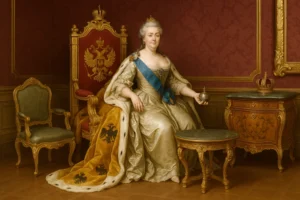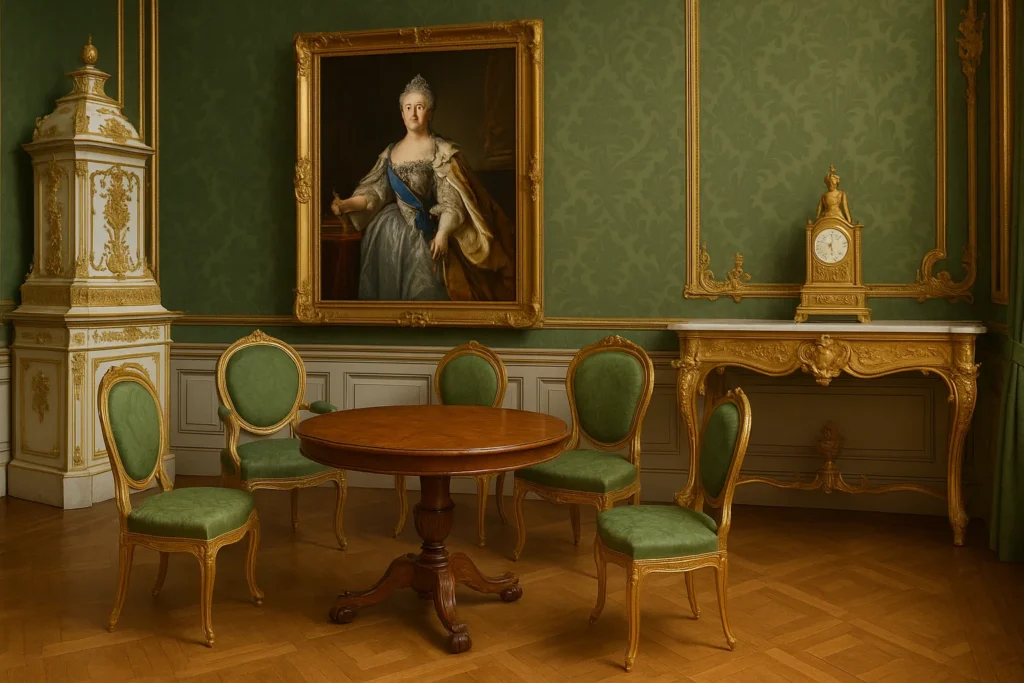When we think of luxury, elegance, and power expressed through furniture, one name stands out in European history — Catherine the Great. As Empress of Russia from 1762 to 1796, Catherine wasn’t just a powerful ruler; she was also a passionate patron of the arts and design. Her exquisite taste and dedication to aesthetics gave rise to a collection of furniture that is still admired centuries later. Today, Catherine the Great furniture is a term that evokes opulence, sophistication, and a distinctly imperial style.
Who Was Catherine the Great?
Before diving into the furniture, it’s worth understanding the woman behind it. Born in 1729 in what is now Poland, Catherine II came to power in Russia after a coup that deposed her husband, Peter III. As Empress, she expanded Russian territory, reformed the government, and elevated the country’s cultural status on the world stage.
Catherine was heavily influenced by Enlightenment thinkers and had a strong admiration for Western European art and design — particularly French and German styles. Her reign marked a golden age for architecture, painting, sculpture, and of course, furniture design in Russia.
The Style of Catherine the Great Furniture

Catherine the Great furniture reflects the classical elegance of 18th-century European styles, blended with Russian grandeur. Influenced primarily by the Rococo and Neoclassical movements, her furniture was designed to impress — not only in craftsmanship but in sheer visual impact.
Key Characteristics Include:
- Lavish Ornamentation: Furniture often featured gilded carvings, elaborate scrolls, and intricate floral motifs.
- Neoclassical Symmetry: Clean lines, straight legs, and symmetrical design became increasingly common, reflecting Catherine’s love for Greco-Roman art.
- Rich Materials: Pieces were crafted from rare and expensive woods like mahogany, ebony, and rosewood, often inlaid with mother-of-pearl, ivory, and precious metals.
- Upholstery Excellence: Seating was upholstered with fine silks, velvets, and tapestries imported from France and Italy.
Notable Furniture Pieces from Catherine’s Reign
Many iconic furniture pieces from Catherine’s time still exist today, preserved in museums and private collections. Some of the most famous examples can be found in the Hermitage Museum in St. Petersburg, which was originally built as a small retreat for Catherine herself.
The Tsarskoye Selo Collection
One of the most extraordinary collections attributed to Catherine is located at Tsarskoye Selo (The Tsar’s Village). This royal residence houses an array of masterpieces, including:
- Gilded Commodes and Cabinets: These featured finely painted panels, sometimes depicting mythological scenes, framed with gold accents.
- Empire-style Thrones and Chairs: Reserved for formal state events, these chairs were both regal and artistic.
- The Amber Room Furniture: Though the Amber Room itself is more famous for its panels, the accompanying furniture was equally opulent, designed to match the glowing amber decor.
The Influence of French Designers
Catherine employed foreign artisans, especially French designers who were experts in Rococo and Neoclassical furniture. Some of the most well-known furniture makers associated with her court include:
- David Roentgen: A German cabinetmaker who crafted mechanical and multifunctional furniture, highly prized by Catherine for both their innovation and beauty.
- Charles Cameron: A Scottish architect who helped introduce Neoclassical elements to Russian interiors, influencing the furniture design in palaces like Pavlovsk and Tsarskoye Selo.
Their influence helped Russian imperial furniture become some of the finest in Europe, blending Western techniques with Russian themes.
Why Catherine the Great Furniture Still Matters Today
Though centuries have passed since Catherine the Great’s reign, her taste in furniture continues to inspire designers, collectors, and historians around the world. Her emphasis on beauty, detail, and quality left a lasting impact on Russian design — an impact that can still be seen in luxury furniture lines and historical restorations today.
For Antique Collectors
Furniture from Catherine’s era is highly valuable, both monetarily and historically. Authentic pieces fetch high prices at auctions and are considered museum-worthy.
For Interior Designers
Modern interpretations of Catherine the Great furniture influence high-end interior design. From regal headboards and mirrored dressers to hand-carved side tables, the aesthetics of her era remain timeless.
For Historians and Cultural Enthusiasts
Each piece of furniture tells a story — of European influence, Russian craftsmanship, and a ruler’s dedication to art. Studying these pieces helps us understand more than just design; it gives insight into 18th-century culture, politics, and identity.
Final Thoughts
Catherine the Great furniture is far more than ornamental decor. It represents a fusion of artistic excellence, political power, and timeless taste. From the intricately carved legs of a throne to the silk-upholstered cushions of a royal settee, each item created under her reign carries a legacy of elegance and authority.
Whether you’re an antique enthusiast, a lover of imperial history, or a designer seeking timeless inspiration, the world of Catherine the Great furniture is rich, fascinating, and undeniably beautiful.
